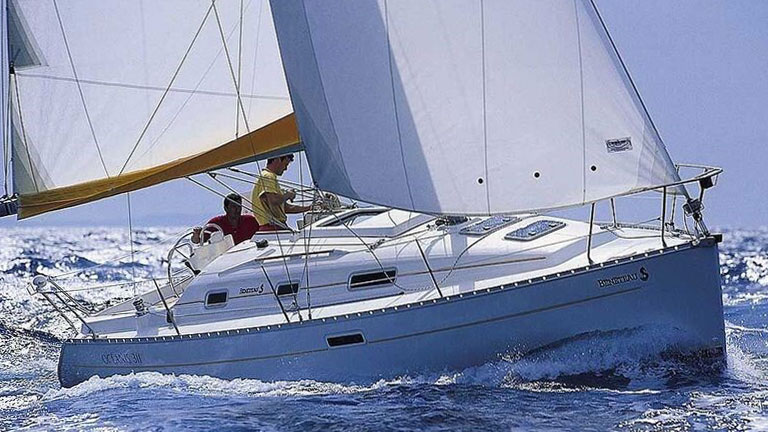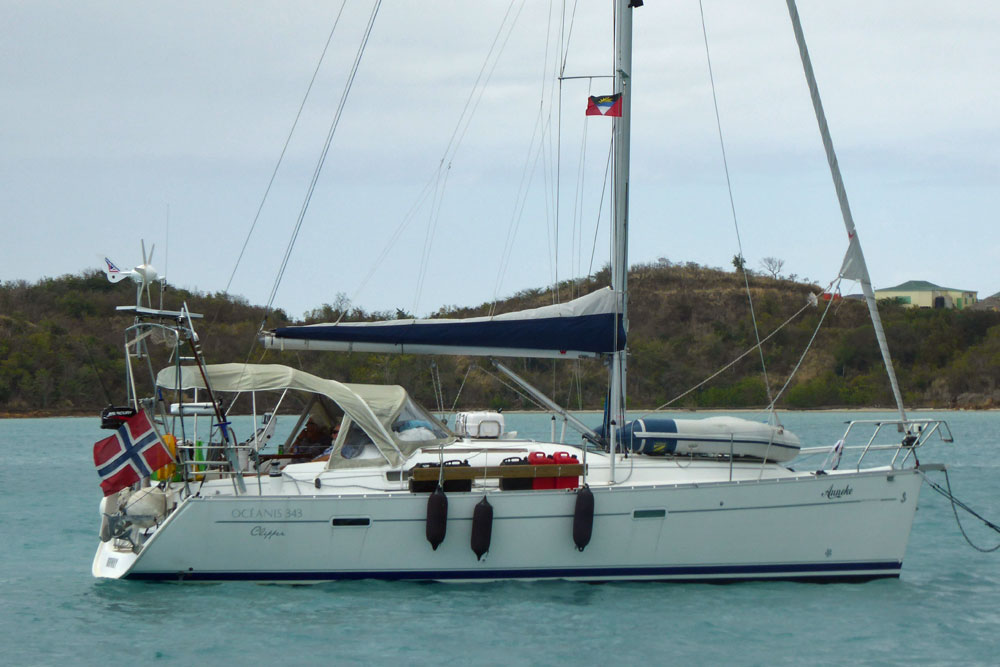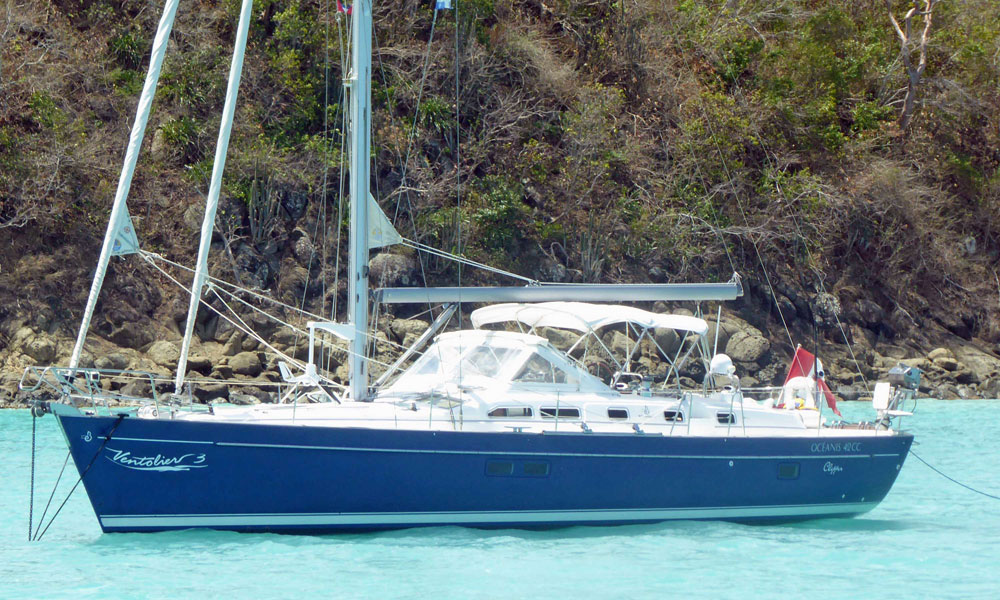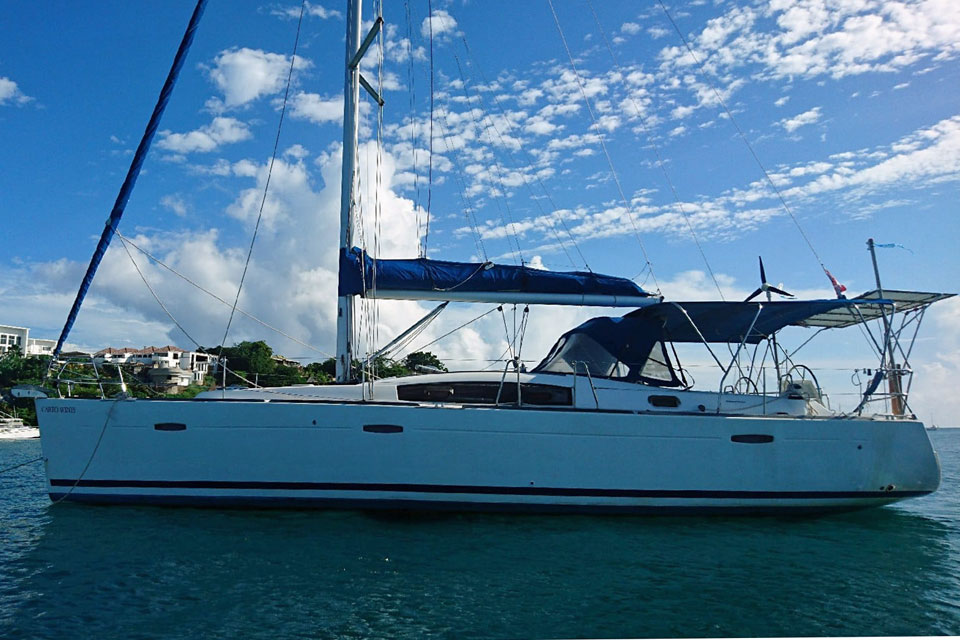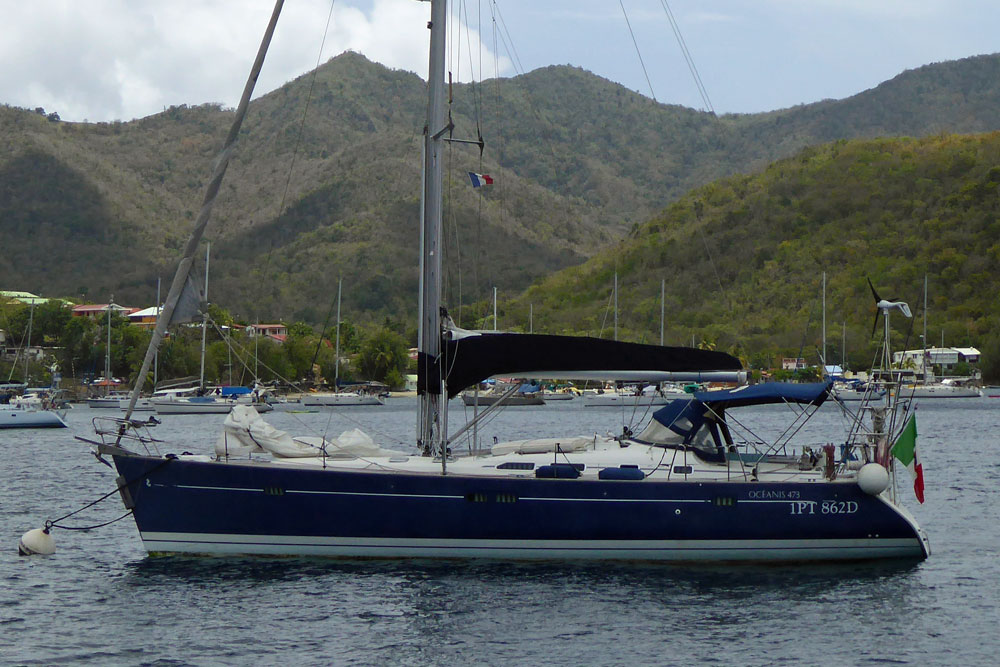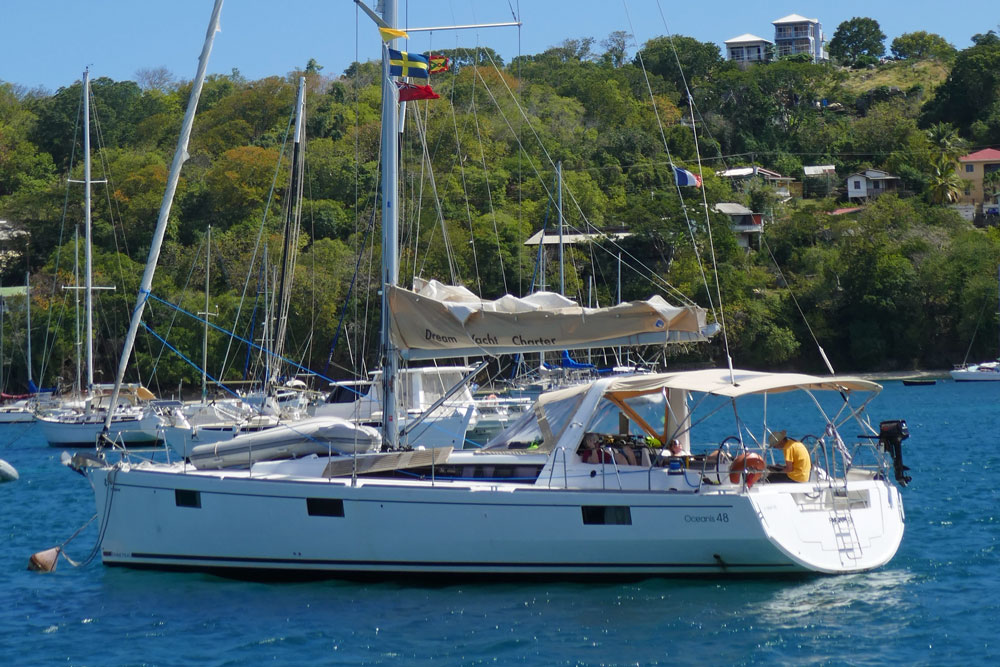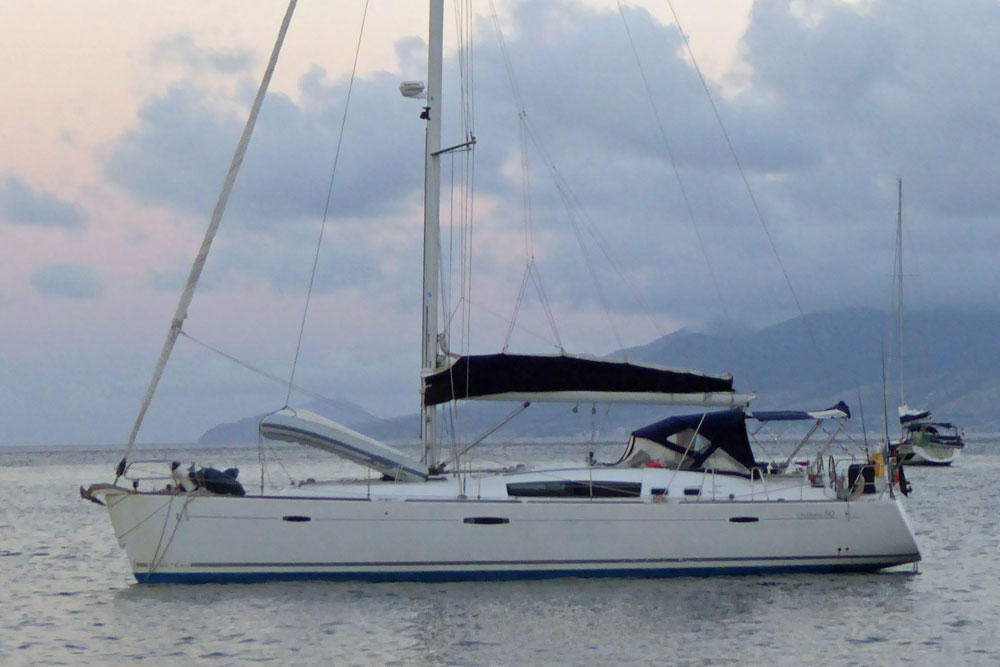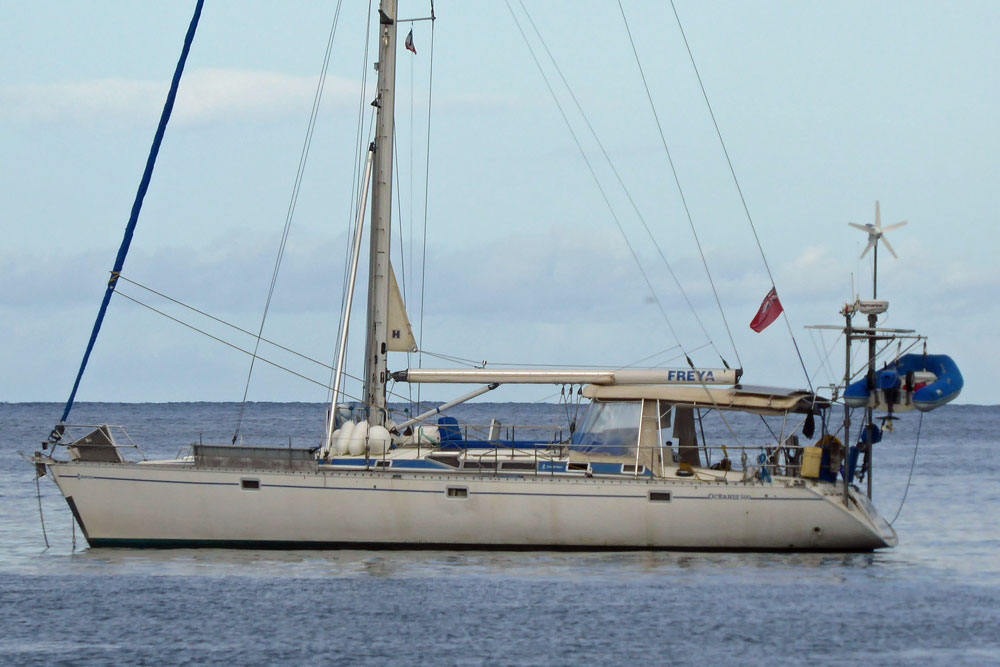- Home
- Cruising Yachts 40' to 45'
- Beneteau Oceanis 400 Sailboat Specs
The Beneteau Oceanis 400
Specs & Key Performance Indicators
The Beneteau Oceanis 400 sailboat, designed by French naval architect Jean Marie Finot of Groupe Finot, was built by Beneteau, a company based in Saint-Gilles-Croix-de-Vie, France.
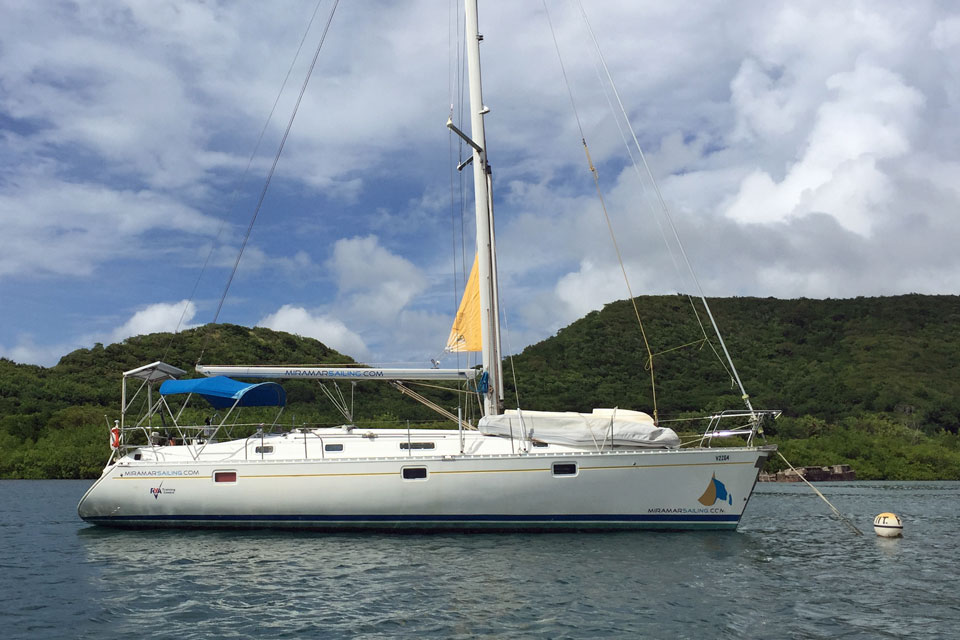
Published Specification for the Beneteau Oceanis 400
Keel & Rudder Configuration: Fin keel with bulb & spade rudder
Hull Material: Fiberglass (GRP)
Length Overall: 12.2m (40'0")
Waterline Length: 10.8m (35'5")
Beam: 3.95m (12'11")
Draft: 1.7m (5'7")
Rig Type: Masthead Sloop
Displacement: 8,701 kilograms (19,180 pounds)
Ballast: 2,400 kilograms (5,291 pounds)
Water Tank Capacity: 530 liters (140 gallons)
Fuel Tank Capacity: 151 liters (40 gallons)
Hull Speed: 7.98 knots
Designer: Jean Marie Finot (Groupe Finot)
Builder: Beneteau
Year First Built: 1991
Year Last Built: 1997
Number Built: 430
Options & Alternatives
Buyers of the Beneteau Oceanis 400 sailboat had several design options to choose from:
- Rig Type: The primary rig type available was a sloop, typically a masthead rig.
- Draft: There were options for both deep and shallow drafts. The standard draft was around 1.7 meters (5 feet 7 inches), but a shoal draft version was also available.
- Interior Layouts: The Oceanis 400 offered different interior layouts. Common configurations included two or three cabins, with variations in the number of heads and the arrangement of the saloon and galley areas.
Later versions of the Beneteau Oceanis 400 sailboat were produced, with some notable differences:
- Oceanis 411: Introduced as a successor to the Oceanis 400, the Oceanis 411 featured a slightly longer hull at 12.71m (41'8") overall and improvements in interior space and comfort. It also offered more modern styling and updated equipment options.
- Oceanis 40: This model, launched in the mid-2000s, continued the evolution of the Oceanis line. It had a more contemporary design, with a focus on maximizing interior volume and comfort. The Oceanis 40 also featured advancements in hull design and rigging for improved sailing performance.
Sail Areas & Rig Dimensions
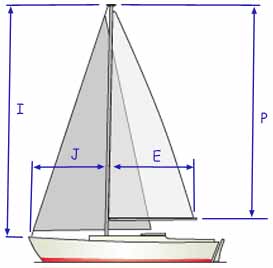
I: 14.7m (48'2")
J: 4.1m (13'5")
P: 12.9m (42'3")
E: 4.8m (15'7")
Mainsail Area: 30.6m2 (329ft2)
Foresail Area: 30m2 (323ft2)
Total Sail Area: 60.6m2 (652ft2)
Published Design Ratios
The Key Performance Indicators (KPIs)
The following analysis of the design ratios gives an indication of the boat's likely sailing characteristics, but see the 'Notes of Caution' below:
1. Sail Area/Displacement Ratio (SA/D): 14.6
The Sail Area/Displacement Ratio of 14.6 suggests that the Oceanis 400 is somewhat underpowered. It is a little below the threshold of 16, indicating that it may not have the same potential for high performance as boats with higher SA/D ratios. This ratio implies that the boat is designed more for cruising comfort rather than racing or high-speed sailing.
2. Ballast/Displacement Ratio (B/D): 27.6%
A Ballast/Displacement Ratio of 27.6% indicates that the Oceanis 400 has moderate stiffness. While it won't be as stiff or powerful as boats with a B/D ratio of 40 or more, it offers a balanced approach between stability and performance. This suggests it will be reasonably good at standing up to the wind and handling moderate sea conditions without excessive heel.
3. Displacement/Length Ratio (D/L): 192.5
The Displacement/Length Ratio of 192.5 falls into the Light Displacement category (100-200). This suggests that the Oceanis 400 is relatively light for its length, meaning it will perform well regarding handling and manoeuvrability. It also implies that the boat will require less sail area to reach its design hull speed compared to boats with higher D/L ratios.
4. Comfort Ratio: 26.7
With a Comfort Ratio of 26.7, the Oceanis 400 is expected to have a somewhat lively motion. The number falls within the range of 20 to 30, indicating that this sailboat is designed as a coastal cruiser with moderate stability. It will have more motion than heavier bluewater boats, but it is generally suitable for family cruising in reasonably protected waters.
5. Capsize Screening Formula: 1.92
The Capsize Screening Formula of 1.92 is below the critical value of 2.0, implying that the Oceanis 400 has reasonable bluewater capability. This low CSF indicates that the boat has a favourable beam-to-displacement ratio, making it less prone to capsize, and is thus safer for ocean passages than boats with higher CSF values.
Summary
The Beneteau Oceanis 400, with its design ratios, is oriented more towards comfortable, moderate-performance cruising rather than high-performance sailing. Its moderate Sail Area/Displacement Ratio points to decent but not exceptional speed potential. The Ballast/Displacement Ratio and Comfort Ratio suggest a good balance between stability and comfort, making it ideal for coastal cruising with occasional forays into less protected waters. The Displacement/Length Ratio indicates it's light and should handle well under sail. Finally, its Capsize Screening Formula supports its suitability for bluewater passages, adding to its versatility as a family cruiser.
Here's how to calculate the KPIs yourself - without having to wrestle with the mathematics...
Design Ratios: Notes of Caution...
- The Sail Area/Displacement Ratio (SA/D): This ratio provides an estimate of the sail power relative to the boat's weight, which can indicate potential speed in various wind conditions. But it doesn't account for the efficiency of the sail plan, the rigging, or the skill of the crew. Real-world performance can vary significantly based on these factors.
- The Ballast/Displacement Ratio (B/D): This ratio gives an idea of the boat's stability and stiffness, which is crucial for handling and safety. But it doesn't consider the distribution of the ballast or the hull shape, both of which can greatly affect stability. A high B/D ratio alone doesn't guarantee a stable boat if the ballast is poorly distributed.
- The Displacement/Length Ratio (D/L): This ratio helps predict the boat's speed potential and its behaviour in different sea conditions. But it doesn't account for the hull design or the boat's overall weight distribution. Two boats with the same D/L ratio can perform very differently if their hull shapes are different.
- The Comfort Ratio (CR): This ratio estimates the boat's motion comfort in a seaway, which is important for long passages. But it doesn't consider the boat's interior layout, which can also affect comfort. Additionally, personal tolerance to motion varies, so a boat that is comfortable for one person might not be for another.
- The Capsize Screening Formula (CSF): This formula assesses the likelihood of a boat capsizing in heavy seas, which is critical for offshore safety. But it doesn't take into account the boat's handling characteristics or the skill of the crew. A boat with a low CSF can still capsize if poorly handled in severe conditions.
General Limitations
- Static Nature: These ratios are static measurements and don't account for dynamic factors like wave action, wind gusts, or crew actions.
- Simplification: They simplify complex interactions into single numbers, which can be misleading. Real-world performance is influenced by a multitude of factors that these ratios can't fully capture.
- Context: The context in which the boat is used (e.g., coastal cruising vs. offshore racing) can greatly affect how these ratios should be interpreted.
In summary, while these ratios provide valuable insights into the theoretical performance characteristics of a sailboat, they should be used as part of a broader assessment that includes practical experience, sea trials, and expert advice.
Other sailboats in the Beneteau 'Oceanis' product range:
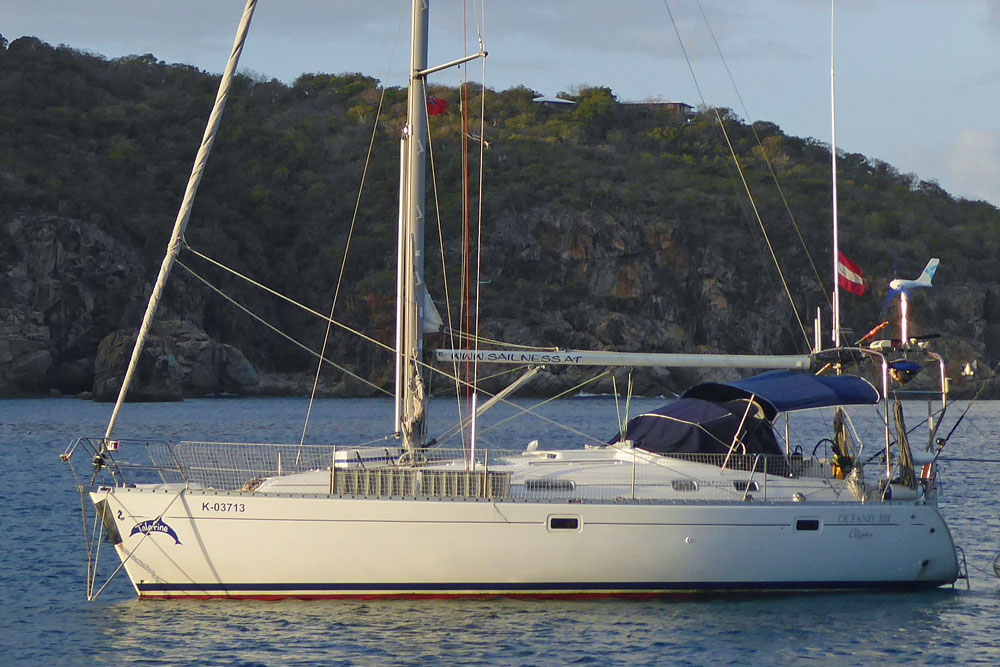 The Beneteau Oceanis 381
The Beneteau Oceanis 381This article was written with the assistance of Gemini, a large language model developed by Google. Gemini was used to gather information, summarize research findings, and provide suggestions for the content and structure of the article.
Recent Articles
-
Passoa 47 Sailboat Review: Comprehensive Specs & Performance Analysis
Jan 04, 26 04:57 AM
Discover the Passoa 47, a legendary aluminium blue water cruiser by Garcia. Explore technical specifications, design ratios, and why its lifting keel is a game-changer for offshore sailors. -
Sailboat Wheel Steering Maintenance & Inspection Checklist
Dec 30, 25 02:32 PM
Keep your vessel’s helm responsive and reliable with our expert maintenance checklist. Master cable tensioning and system inspections to avoid mid-passage failures. -
Modern Boat Electronics and the Latest Marine Instruments
Dec 20, 25 05:27 PM
Should sailboat instruments be linked to the latest boat electronics as a fully integrated system, or is it best to leave them as independent units?
